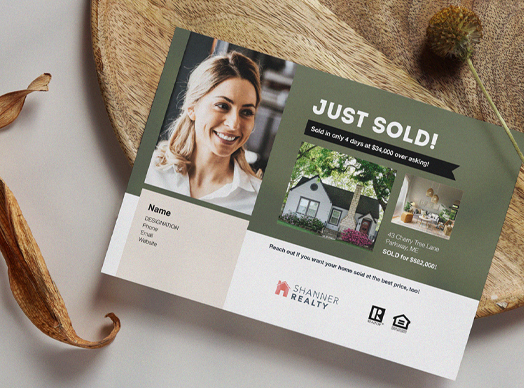In the real estate business, there are some homes that, as the saying goes, practically sell themselves. These are the homes that have been well maintained, are in a desirable neighborhood, and are generally what people refer to as their dream homes.
Then there are those that are, well… not dream homes. These are the problem listings, which will require some real work on the part of the buyer. While your instinct may be to run from these properties, that’s actually a shortsighted move. With a little persistence, you can not only sell the home, but make such a strong impression on the seller that they’ll be sure to tell all their friends and family about how you went the extra mile.
Here are a few suggestions for creating a compelling listing for a property that is, on the surface, less than ideal.
Focus on the positive.
This one is sort of a given, as it’s something you’re already doing in all of your listings. If the house has a beautiful, spacious family room or is within walking distance of a popular shopping district, you’ll want to mention that early in your written description. This is doubly important with a property that also has some pretty glaring issues.
Granted, you’re not going to completely negate the negative aspects of the home, but, to some degree, most property descriptions succeed or fail based on whether the agent can get potential buyers to focus on the “right” aspects of the home. A difficult listing is no different.
Put extra effort into your photos.
When the property you’re trying to sell isn’t especially photogenic, putting a little extra TLC. into your photos becomes even more important. We’re not suggesting you go overboard with filters or other editing tricks. Instead, just make sure you’re doing all you can to bring out the natural beauty of the home.
It should go without saying, but lead with the parts of the home that are the most attractive—whether that’s the exterior of the house or a particular room. Beyond this, try to think like a professional photographer. Are the rooms you’re shooting well lit, or, if you’re shooting outside, have you picked a day where you can take advantage of some natural sunlight?
It’s also worth taking some time to learn about the rule of thirds. This technique does wonders, because it’s based on the way our eyes process images, as well as what the brain finds most attractive. Basically, it involves framing your photo so that the things you want to highlight—say, an archway or a piece of furniture—are in certain parts of the frame. It’s a simple, yet extremely effective thing you can do that will make your photos resonate more deeply with your potential buyers, increasing the likelihood they’ll want to see the property in person.
Acknowledge the flaws.
Of course, if you only show the beautiful parts of the house, people browsing your listing will wonder why you haven’t shown photos of, say, the second bathroom or the supposedly “finished” basement. And, no matter how much you try to focus on the positive, prospective buyers are eventually going to step inside the house, giving them full view of all the flaws you neglected to mention.
To address these problems up front, many agents will try to put a positive spin on things, using expressions like “fixer-upper” or “a handyman’s special.” Trouble is, most savvy buyers understand the innuendo behind these phrases and aren’t quite won over by your charming wordplay.
So, instead, think of this particular situation like a job interview, where you’re asked to name your biggest weakness. The trick is to acknowledge the weakness, reveal how you’re working to overcome it, and then pivot to a more positive trait. Let’s say you’re trying to sell a home with an out-of-date kitchen. You could mention that the room might “need a little work,” but that it’s actually quite spacious, and there’s plenty of room to add in an island or a breakfast nook.
Stoke your client’s emotions.
Ultimately, selling a home is like selling anything else—people are going to buy because of the way it makes them feel. If your home looks great on paper, but you’ve failed in selling the idea of the home, you won’t close the deal. This is especially true when there are aspects of the property that buyers might not love.
Make people visualize themselves inside the home by using descriptive language that appeals to their emotions. For instance, a listing might be a great starter home, or a wonderful place to raise a family. When you describe a home this way, you encourage buyers to look past a property’s fixable flaws and connect with the home on a human level. When this happens, you’re far more likely to attract people who will actually want to buy.
Appeal to house flippers.
When all else fails, even the most dilapidated properties are potentially interesting to developers and house flippers. When this is your target audience, you’ll want to lean heavily on the idea that this is an investment property, including the (hopefully minor) things the buyer would need to do in order to get the home up to snuff.
If all goes well, you’ve made another connection who might be willing to work with you again in the future—whether that’s buying more investment properties from you, recommending you to their network, or possibly even asking your assistance when it comes time for them to sell.
At the end of the day, listing a difficult property isn’t much different than listing any other. You’re ultimately crafting a story that will pique the interest of the right people. And, no matter what shape the property is in, remember: there is a potential buyer out there. You just need to make the connection.




















